- What’s an Inland Beach Vacation?
- Go Go Go
- Shanghai, Xitang, Wuxi
- A Jiangnan Homecoming
- Xian the Ancient Capital
- Xian & Its Glory
- (Other) Foods
- (Muslim Street) Foods
Cumin-infused charcoal smoke. Hijab-wearing ladies shuttling tourists on tuk-tuks. Young girls in trendy outfits. Dark-skinned Muslim boys hollering business for food stalls. Wok masters. Selfie sticks. Sugar-pulling artisans. Spicy lamb fat dripping from sharpened wood sticks. Propane tanks every five feet. Baby strollers. Animal carcasses hanging above the sidewalk.
This was Muslim Street.
Thirteen years ago, we stumbled upon this place during a break in our arranged itinerary. The tour guide made no mention of it, and we didn’t know that it had a name. It was just a quiet, seemingly low-key traditional marketplace with a lot of (presumably) ethnic Uighur in Muslim garments running small businesses. The brief encounter left a disproportional impression, and became one of our favorite memories in the month-long trip through China.
Today it had become a highly commercialized top attraction in central Xian, but its heart and soul remained what we had longed for. It was like those famous Taiwanese night markets – but larger, more crowded, and busier for more hours in the day than you may be awake. Also above and beyond other Asian street food scenes was the showmanship on display by the food masters. The main challenge you’ll have here is how to remain hungry after eating five meals.
My only regret about this trip was having not booked a hotel closer to (or on) Muslim Street. We loved this place so much that, within four days, we spent 12+ hours here across four trips. That was a lot of taxi drivers to piss off with minimum-fare rides!
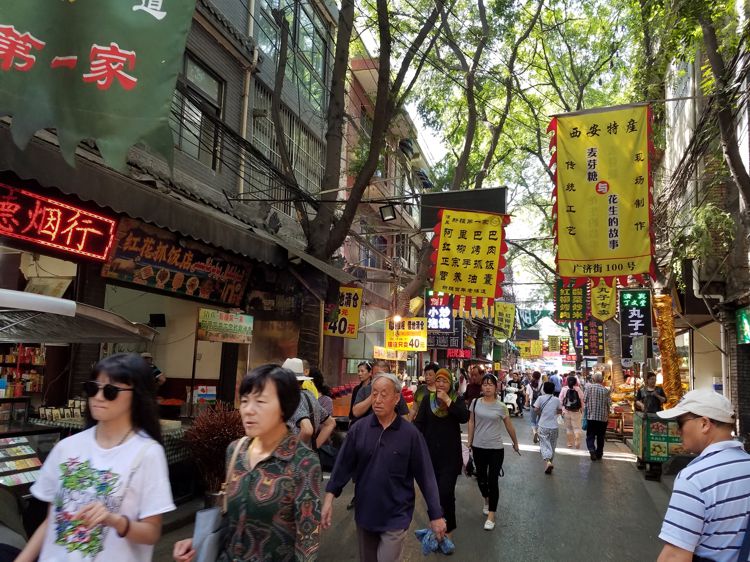
Pedestrian traffic was already picking up by mid-morning.
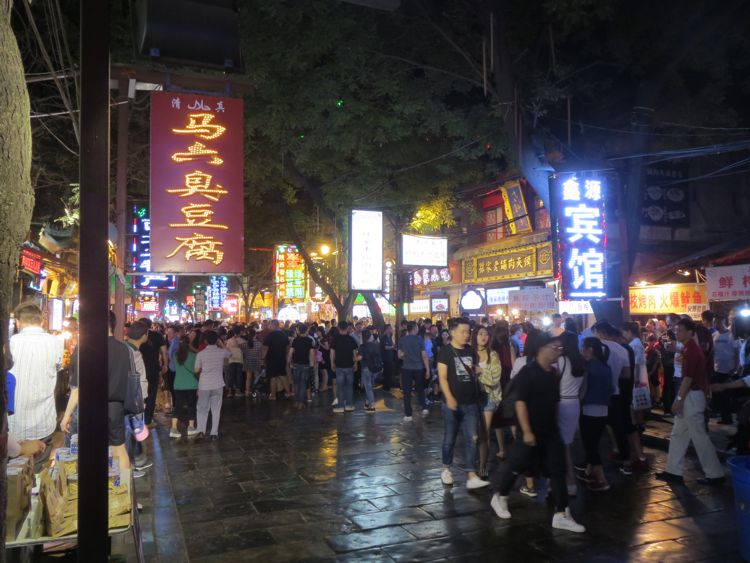
But the evening was when everything really picked up.
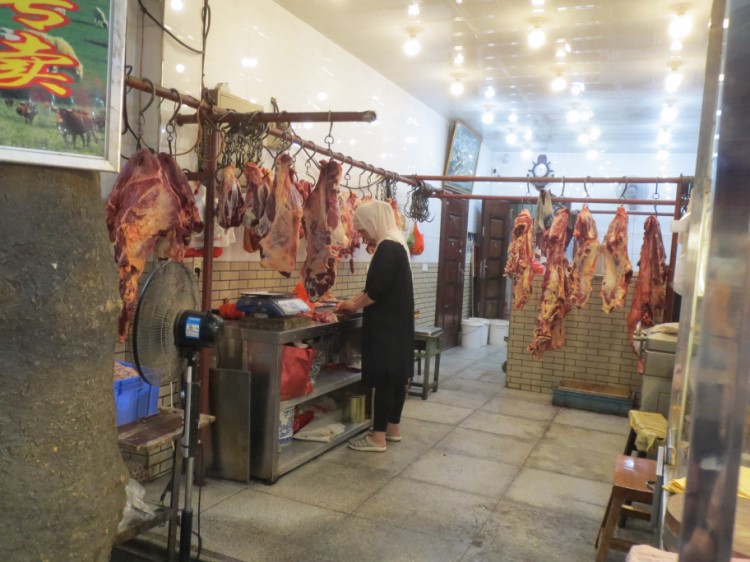
Freshly butchered halal meat here.
Kebabs
Grilled lamb (and beef, for the occasional boring tourist) on stick on Muslim Street, like bread in Italian restaurants, was everywhere. There was a grilled meat stand every few steps, and almost every restaurant also served it. The most popular version here put the meat on red willow twigs. It seemed like a hazard to have hoards of people walking around with these sharpened sticks in their hands. I don’t even like skewered anything, in general, but we ate this every day.
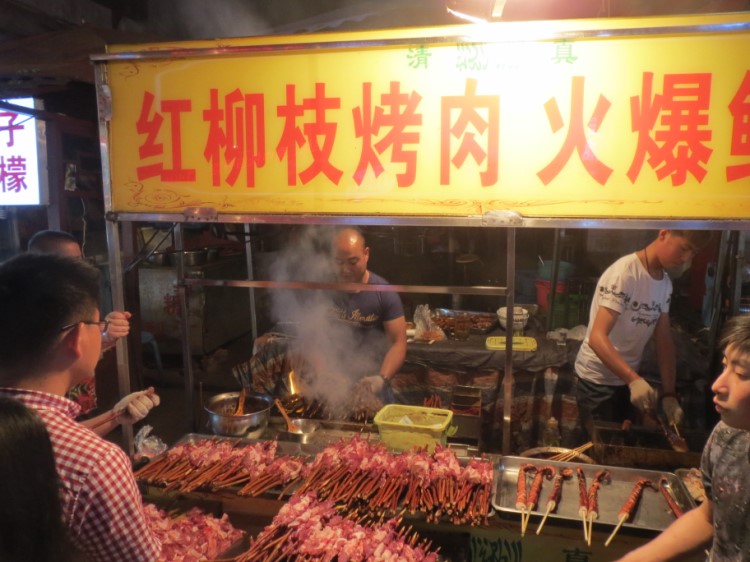
At a popular stand, all this was to be consumed as quickly as it could be cooked.
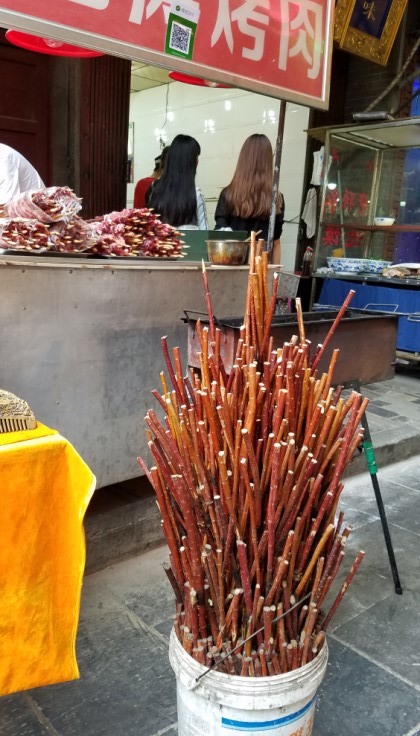
Bucket o’ sticks
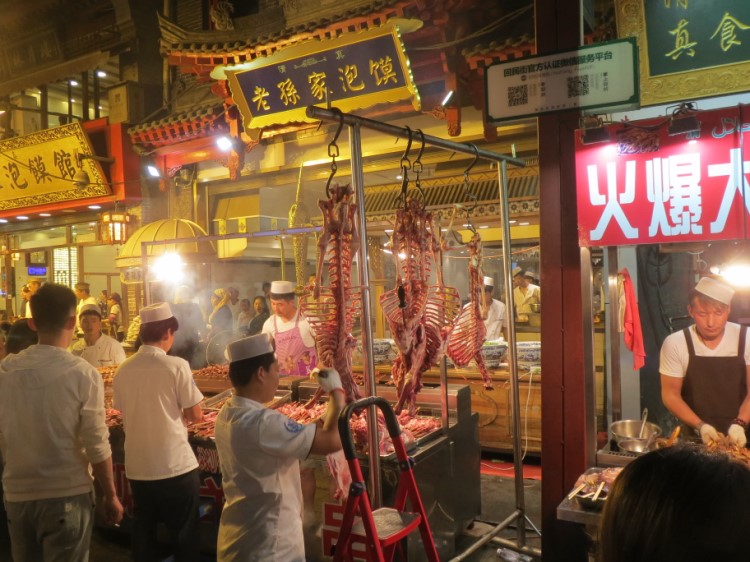
How fresh is the meat? Well it was still part of a whole lamb just minutes ago
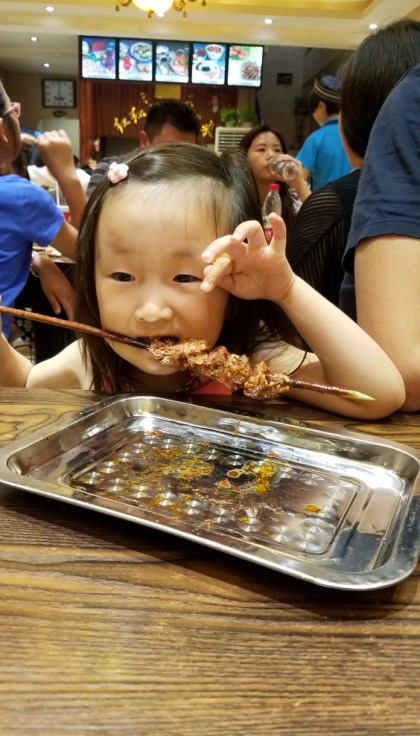
Xuan enjoying her 3rd skewer despite the spiciness.
Random Goodies
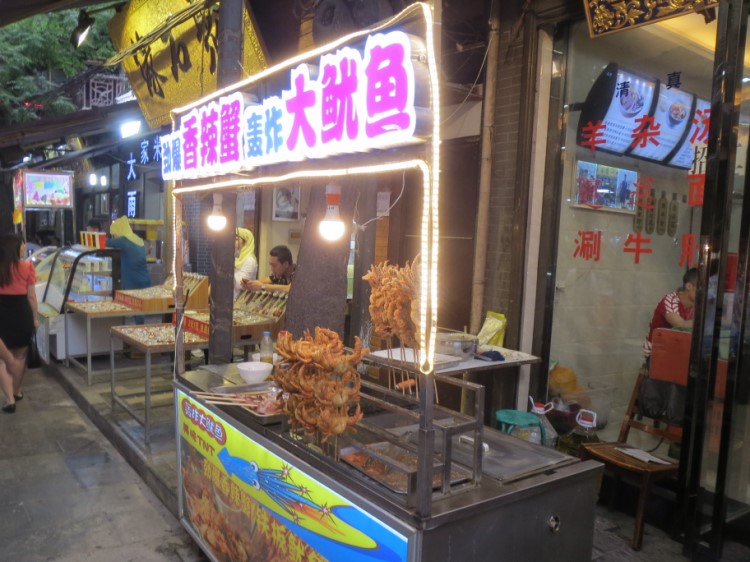
Considering how far inland Xian was, this was a lot of giant cuttlefish
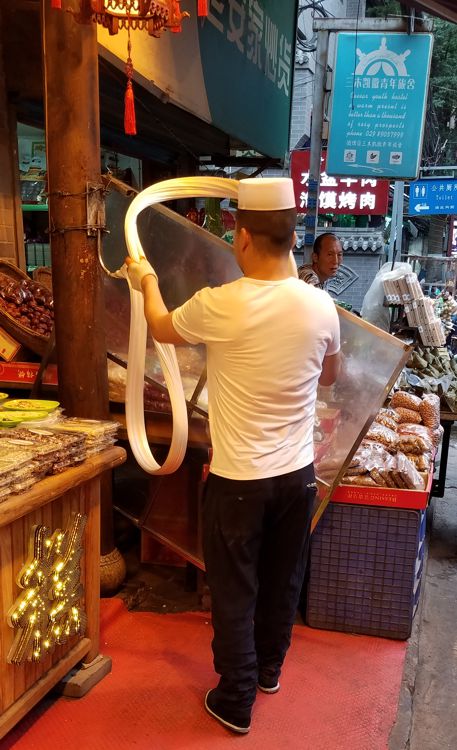
Pulling candy on the street
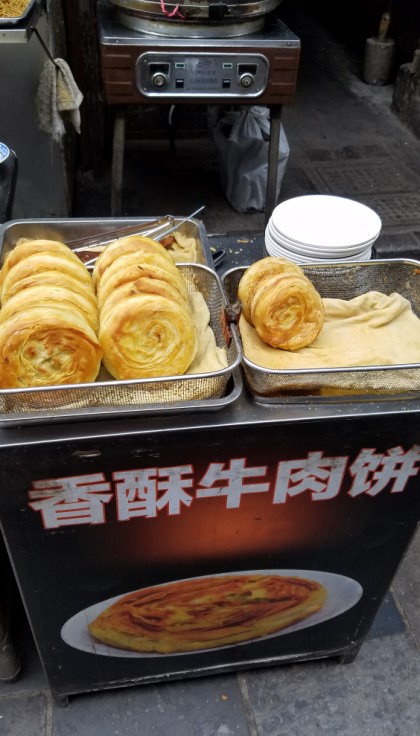
Beef pancakes, somewhat similar in style to the Shanghainese scallion pancakes
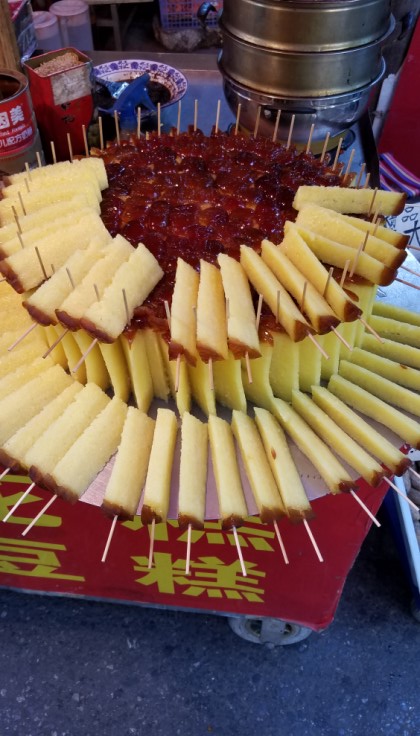
The “mirror cakes”, among the most popular sweets on Muslim Street
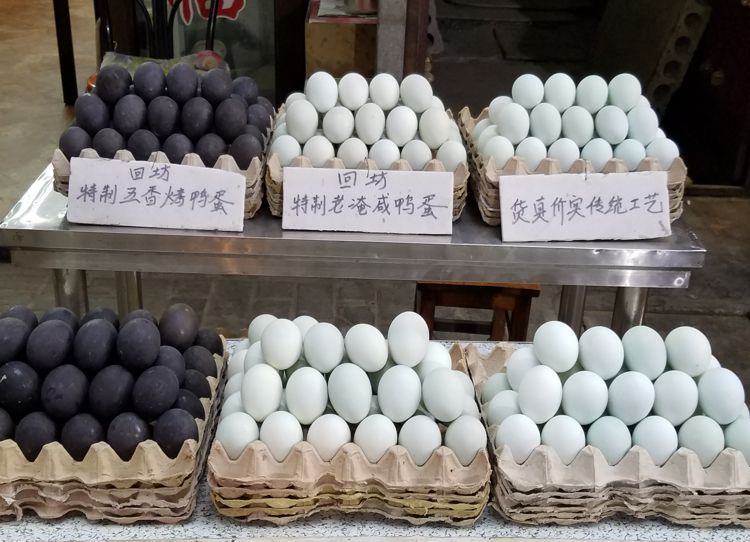
Different salted duck eggs – five spice baked (black) and traditional marinated (white)
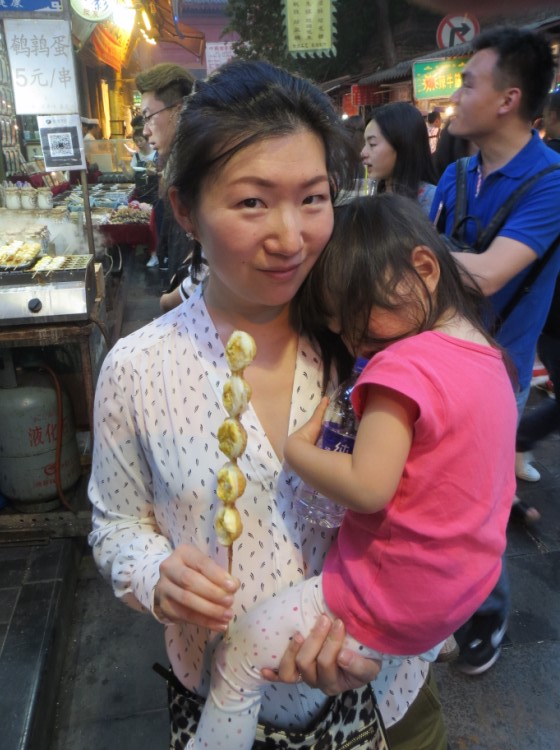
Fried quail eggs on a stick
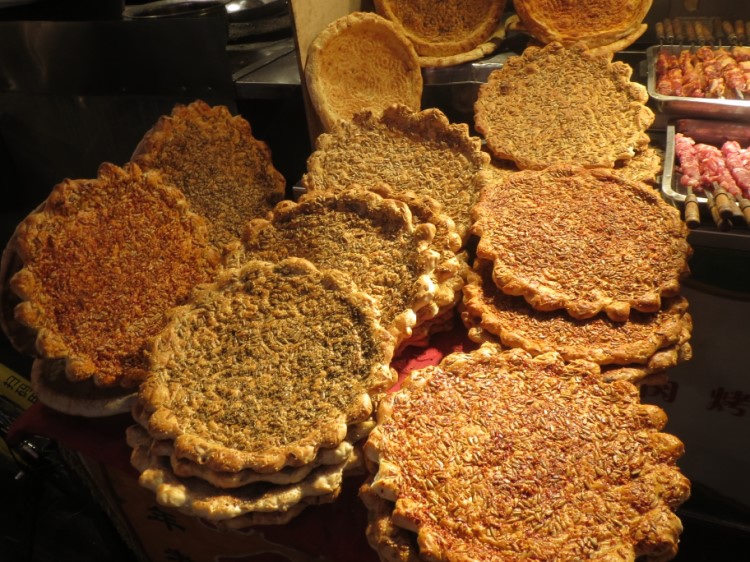
Various spiced naan
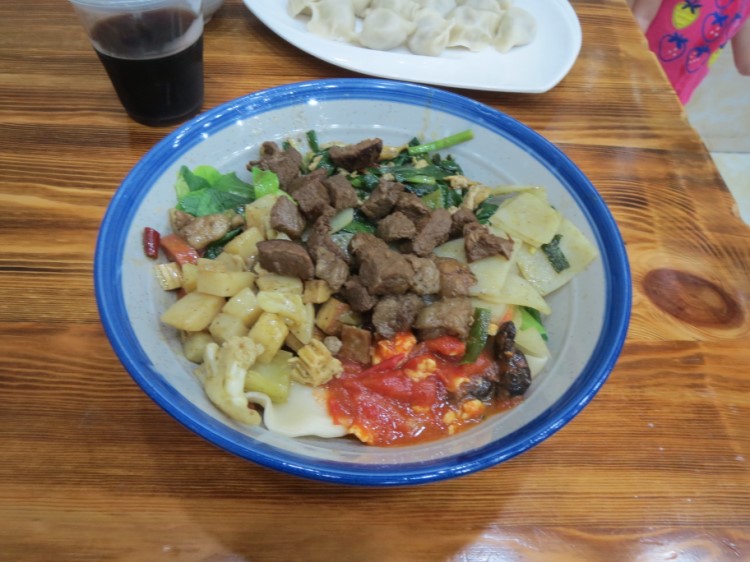
Biang Biang noodles, another famous Xian dish
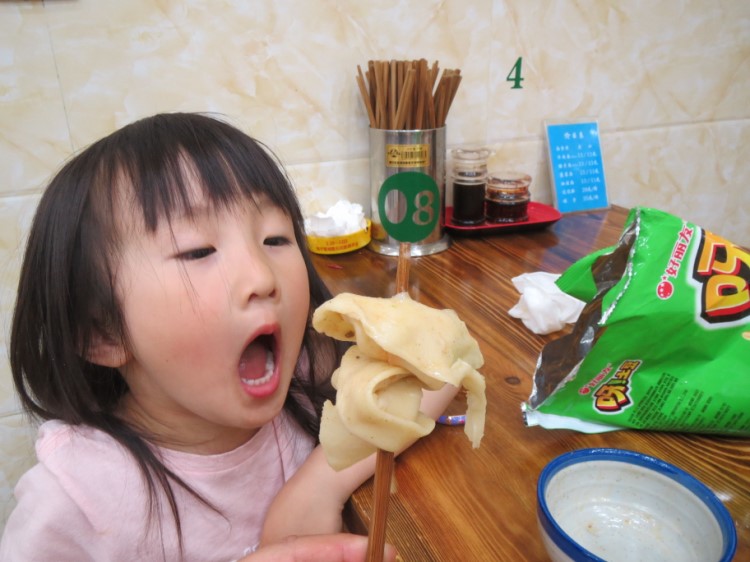
These noodles are huge in size
Pao Mo (泡饃)
Anyone mildly particular about food probably has a favorite city for everything. We are no exception. Beef noodles = Taipei; egg tarts = Hong Kong; sushi = Tokyo. The same stuff may be available elsewhere around the world, but the standards can be night and day.
Pao mo from Xian, to me, is on the far end of such a scale. Thirteen years ago I shared one bowl with four other people as a snack, fell in love, and had been longing for it since. In the subsequent years, I had the same dish in Beijing and New York, at places that otherwise made legit Xian cuisine. It was barely edible. I could not comprehend how a seemingly basic dish could taste like appetizer of the gods in one city, and used Play-Doh everywhere else. I gave up trying to order it, and simply waited for my return to Xian.
I was so happy to eat the real thing again. I almost cried. I had it once for dinner, once for lunch, and once for breakfast…
Pao mo is sort of like noodle soup. Instead of noodles, however, the starch of the show is “mo” – an extremely dense, steamed bread slightly larger than a hockey puck. At legit places, you are given this bread in its original form, and supposed to tear it into bean-sized pieces by hand. This is a tedious and labor intensive task, but it’s actually crucial to the texture of the eventual dish. The places in Beijing and New York cut the “mo” by knife into tiny cubes, which I believe is the main reason they completely ruined the dish. Now, after tearing up your “mo”, the server will bring it to the kitchen and cook it in the lamb (or beef) broth.
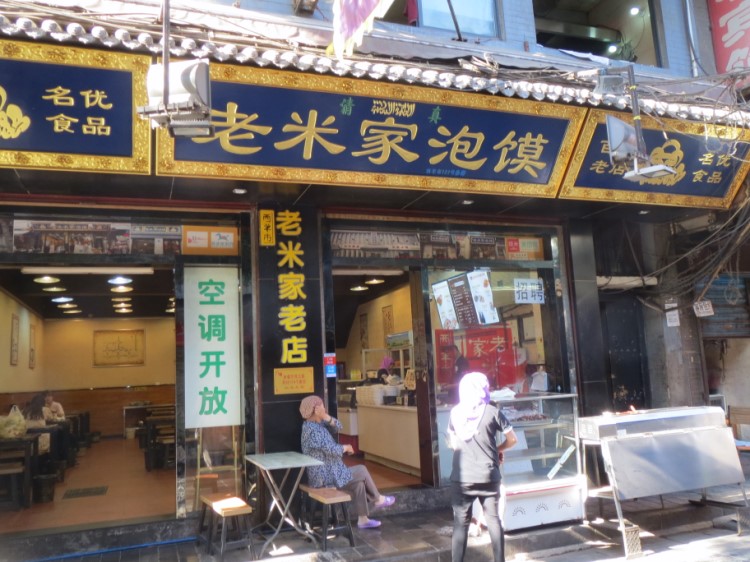
We ate here twice. I think this was a knock-off of the most famous place in town, but whatever. I loved it.
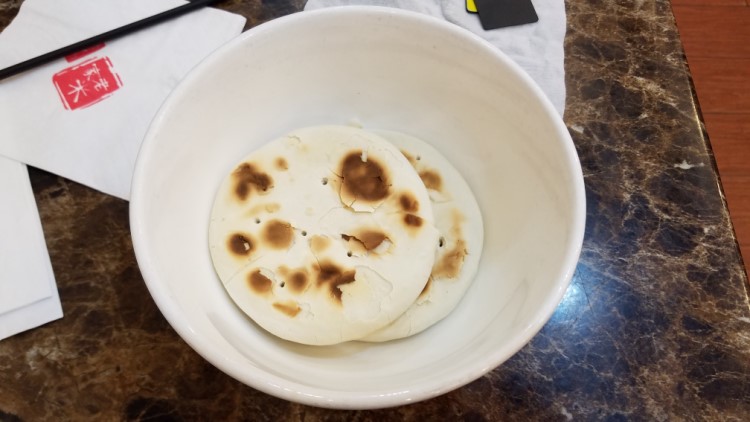
The “mo” – two round breads with the density and elasticity of an eraser.
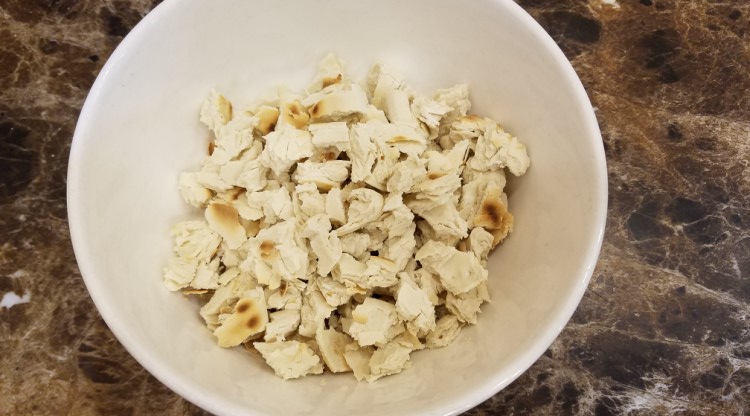
You can look at this and tell that an amateur (me) did it.
You’re supposed to tear it into soybean sizes (which would probably take me an hour)
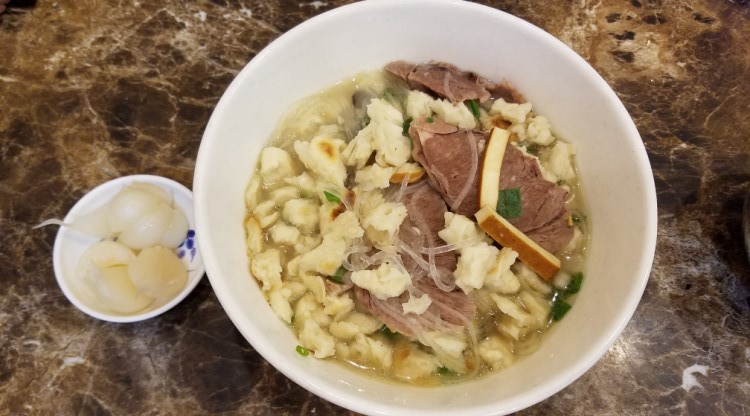
The cooked pao mo, served with sweet pickled garlic – another unforgettable flavor in Xian.
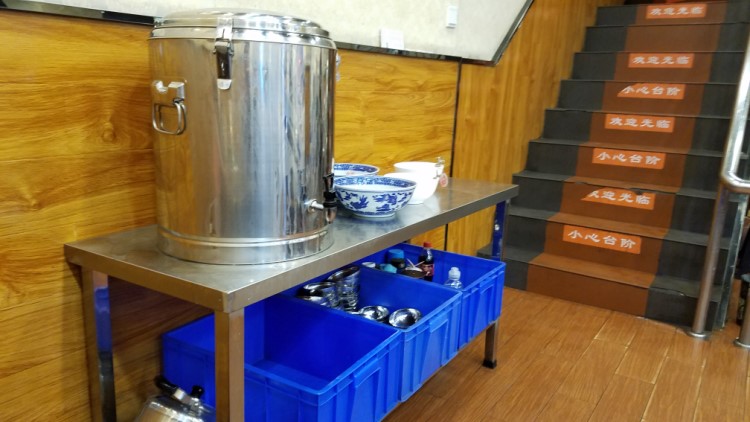
Container of soup to top off your bowl.
Fried Rice
Yeah, I know. Every Panda Express and Chopstick Kitchen makes fried rice. It’s not a fancy or special dish. As a matter of fact, I really don’t care for fried rice. As such, it was a bit odd to learn that one of the most highly recommended restaurants on Muslim Street sold pickle fried rice.
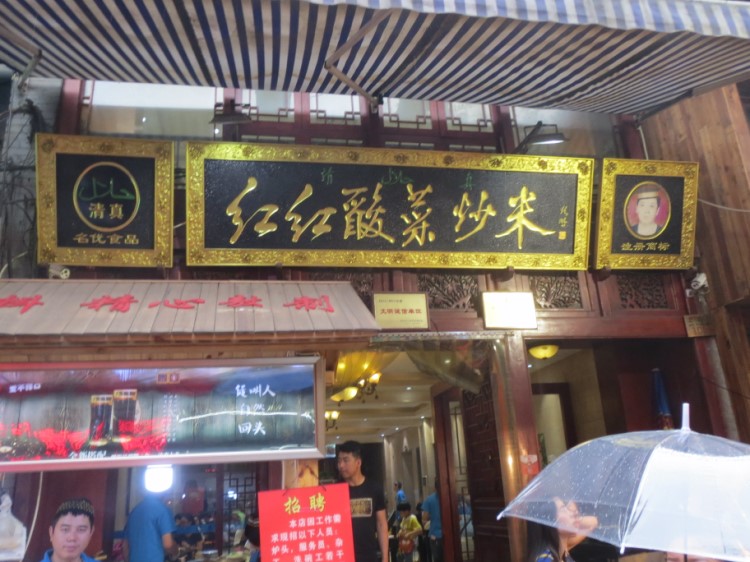
Hong Hong Pickle Fried Rice
The combination of fried rice and (one of the various) Chinese pickle was unheard of outside this city. Even here, very few places made this dish. To my limited knowledge, pickle fried rice is basically synonymous with Hong Hong.
After trying it… I’m tempted to say that this was the best thing I ate on this trip. It’s not that I’d necessarily prefer eating this over a bowl of pao mo, but it was so exceptional for being a damn boring plate of rice. I had eaten over 200 pounds of fried rice in my life, and nothing in memory came close to Hong Hong’s halal dish…
Let’s get the pickle part over with first… the rice was fried with sour pickles, spicy chili, and strips of (lamb?) meat. Taste alone, it reminded us of the Korean kimchi fried rice. The flavor was good, maybe great, but not awesome. Yes I would eat it again any day, though I wouldn’t necessarily prefer it over the same restaurant’s plain egg-and-scallion fried rice. Because it was all about the rice.
They used a short and fat grain, which we usually dislike. It was cooked and fried such that each grain rolled onto your tongue as a unique individual. It was almost like putting flavored marbles in your mouth. Unlike Basmati rice, though, it wasn’t the dryness that separated the grains. This rice was moist, well-oiled, but not too greasy. The sense of satisfaction eating this stuff is really hard to put to words, You know what? Forget about even the egg and scallion. If Hong Hong had cooked a plate of plain rice with nothing else in it, I’d happily eat it for a meal. This kitchen and its rice made me think that chefs around the world had been doing this wrong.
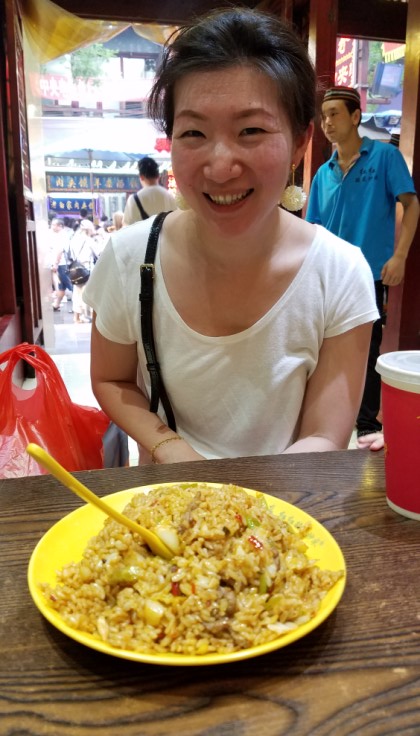
Hong and her Hong Hong pickle fried rice.
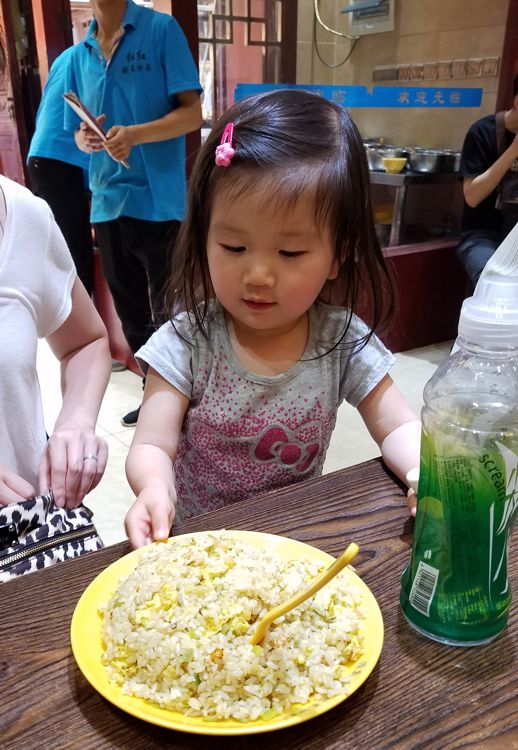
Ting and her egg + scallion fried rice.
Conclusions
This post was kind of hard to write. It was depressing to look at these pictures and realize that I had left the incredible city of Xian, and may take years before I get another bite of real pao mo or real fried rice. I have no idea when, but there’s no question that I do intend to return and eat more.
This had been a successful trip. It did not turn out as relaxing as we assumed of a “beach vacation”, but with little kids the logistics were always more difficult than could be expected. The food, though, hit the spot. We accomplished our primary objective, and returned home with happy bellies. Yeah, back to the gym we go…
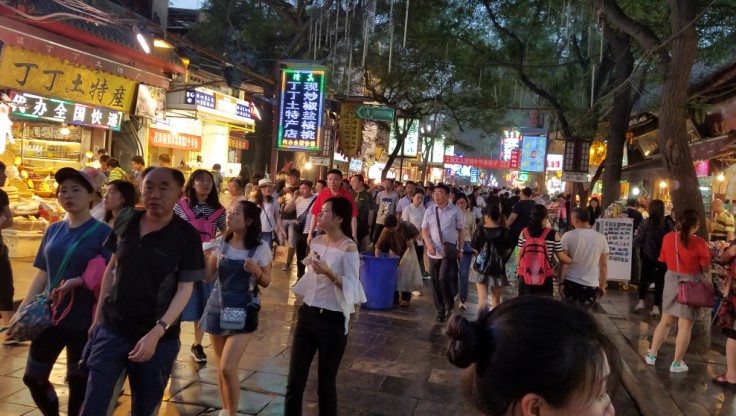
An Inland Beach Vacation (2/8) – Go Go Go – Peter's Blog
June 15, 2017 at 1:38 am[…] (Muslim Street) Foods […]
An Inland Beach Vacation (5/8) – Xian the Ancient Capital – Peter's Blog
June 15, 2017 at 1:39 am[…] (Muslim Street) Foods […]
An Inland Beach Vacation (7/8) – (Other) Foods – Peter's Blog
June 15, 2017 at 1:39 am[…] (Muslim Street) Foods […]
Meats I Eat – Part 1 – Mammals – Peter's Blog
April 24, 2021 at 1:40 pm[…] steak, the largest piece of beef I’ve cooked Fried pork ribs at Lao Wan in Xi’an, China, the most delicious piece of pork in my […]